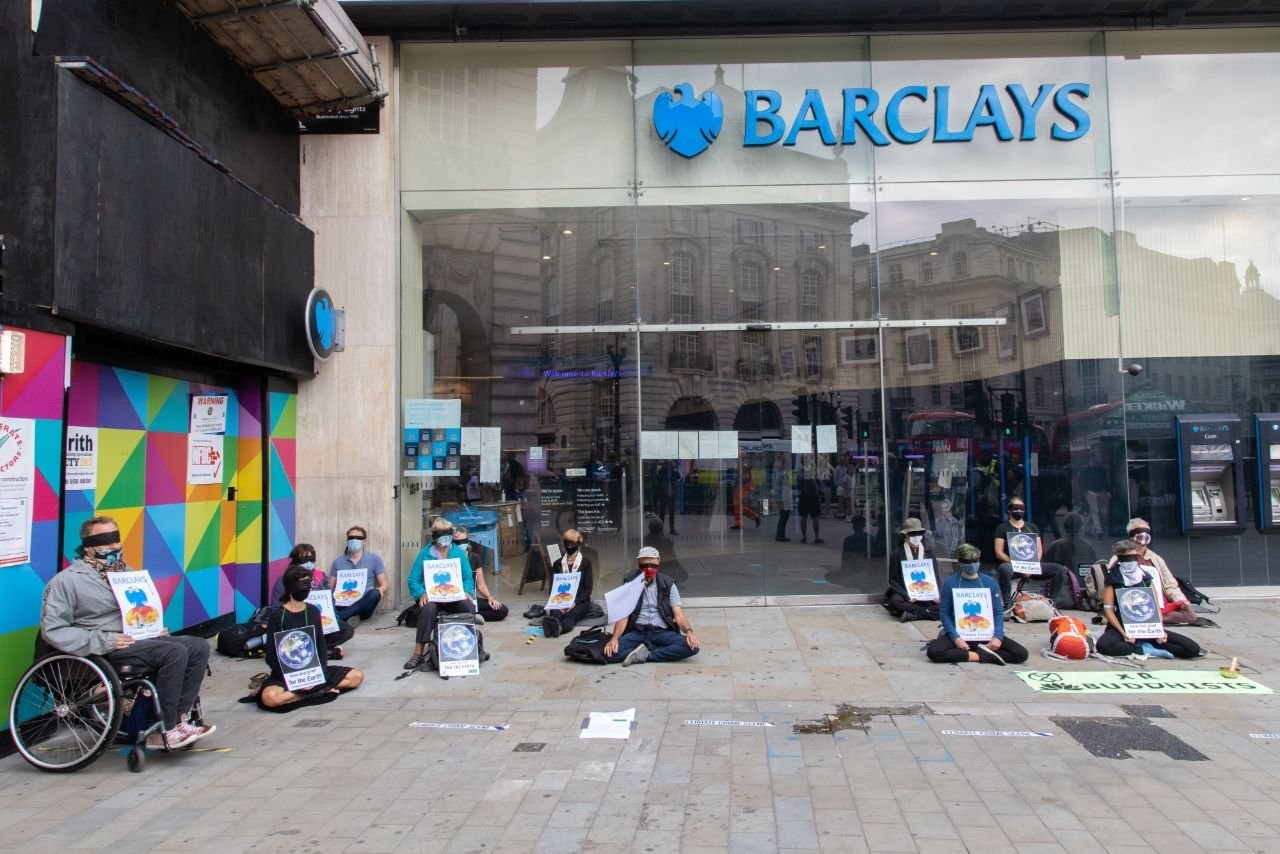
Another day, another ‘climate announcement’ by a major bank.
This week, Barclays has announced how it intends to reach ‘net-zero’ by 2050. It’s created a fancy new ‘methodology’ called BlueTrack and introduced some reduction targets but the detail is unsurprisingly and conveniently tricky to untangle. It has also not taken any actions, for example, it has not committed to end financing of coal, oil, or gas companies.
As the UK is preparing to host the UN Climate Conference in Glasgow at the end of next year, British banks are under more and more pressure to demonstrate they care about climate change. The public is also starting to realise that the world’s biggest polluters rely on banks to fund their operations.
This poses a huge problem for institutions like Barclays. How can it show its climate concern, when its loan book shows the opposite? According to the influential annual Banking On Climate Change report, Barclays is the biggest funder of the fossil fuel industry in Europe, having forked out a gigantic USD $118 billion from 2015 to 2019.
The fact the Paris climate agreement was signed in 2015, and that Barclays claims to support it, shows how disingenuous the bank is about really taking responsibility for its climate impact.
What’s more, this funding is still increasing. By September of this year, Barclays had already pumped more money into the fossil fuel industry than in the same period last year. Add to this the fact that Barclays made a commitment this year to go net zero, and the word ‘greenwashing’ barely even covers it.
Barclays is just one of the British banks struggling to match its lending practices with its ‘net zero’ emission commitments. HSBC has made a similarly empty net zero commitment, while our research shows it is simultaneously holding ownership stakes in at least 18 major companies building new coal power plants. If the projects from these companies alone go ahead, they will generate the equivalent of about 37 years of the United Kingdom’s current annual emissions in carbon dioxide.
The banks tell the public this is all very complicated.
They will say they need datasets, frameworks, metrics, thousands of people working thousands of hours to figure out how to end their contribution to the climate crisis.
Yes, there’s a need for methodology, but in truth, it’s not rocket science.
The banks already know what they need to do – stop financing fossil fuels. Or at the very least, immediately stop financing those companies expanding the coal, oil and gas industries. Anything else is just denial, dither and delay. Barclays’ and HSBC’s current climate plans don’t amount to much. Need a simple litmus test? If your climate policy allows you to pump billions into the industries cooking the planet, then it’s not worth the paper it’s written on.
It is hard not to see this slow release of complicated plans over years as a way to confuse the public, look busy, tie financial observers and investors in knots, and avoid just doing the one thing that needs to be done – stop funding fossil fuel companies.
There are signs of hope – the UN summit in Glasgow means British banks are under real climate scrutiny for the first time. The Youth Strike For Climate generation won’t put up with greenwashing from banks, either as customers or future employees. After all, who wants to work for a company that is destroying your future?
Until we hear the words ‘we will stop funding fossil fuels’ pass the lips of bank executives, the banks’ climate plans will remain inadequate. No expensive consultants needed, we can tell them what to do for free – to stop the climate crisis, stop funding fossil fuels.
This blog post was written by Adam McGibbon, UK Campaigner at Market Forces